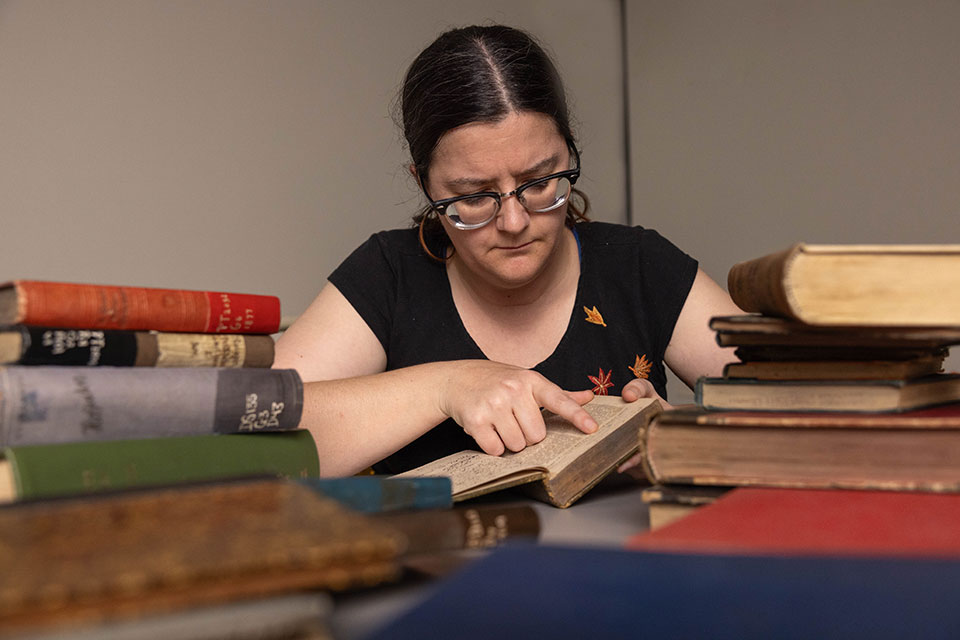JCR at Brandeis
In the first years of Brandeis’s history, the library received 11,288 books through the Jewish Cultural Reconstruction (JCR), representing all areas of scholarship. In contrast to some other recipient institutions, these were not intended as a separate archival collection. Instead, they formed a significant portion of our early circulating collection. Unfortunately, if the Brandeis Library received an inventory of exactly which 11,288 books we received, that list has been lost. The books now sit among the rest of our collection — purchased, donated, and otherwise. The only indication of their history is the stamps from the JCR, Offenbach Archival Depot, and the Jewish and/or Nazi institutions they were held at.
The library has wanted to identify and highlight these resources to make them more findable by researchers for decades, but as so often happens, they did not have the staff or time to properly dedicate to this type of massive project. However, the library has embarked on a collection development project that involves weeding outdated, damaged, and duplicate materials. In the context of this project, they prioritized identifying JCR books in order to avoid accidentally discarding any of them.
Identifying JCR Books

Because there is no record of which books the Brandeis Library received, the only way to identify them is to physically examine each potential book for stamps, bookplates, and any other indication that it might have been received from the JCR. In November 2022, the library generated lists from their catalog of books and journals published in 1945 or earlier in German, Yiddish, Hebrew, Russian, and other key Eastern European languages: around 50,000 items in total. As of November 2024, the library is finishing up the initial search.
 A stamp on a book title page with a Nazi eagle and swastika seal. This stamp is one of the most common Nazi stamps seen by the Brandeis Library and indicates that the book was almost certainly looted.
A stamp on a book title page with a Nazi eagle and swastika seal. This stamp is one of the most common Nazi stamps seen by the Brandeis Library and indicates that the book was almost certainly looted.
This has been carried out as a joint project of cataloging, Special Collections and Judaica staff, and several student employees. When evaluating a book, the staff member goes to the shelf, locates the book, and examines the front and back material to search for stamps, stickers, writing, and any other marginalia. They then document what they find in a spreadsheet. They also take pictures of stamps and bookplates to assist with later research and share with other institutions doing similar projects.
The JCR provided recipient institutions with bookplates indicating that they were part of this donation. Like most institutions, Brandeis does not seem to have been consistent about putting them on the books. Glue also degrades over time, and some bookplates have simply fallen off, or have been covered over by Brandeis library markings. Of the books without specific JCR plates, some were clearly held at Nazi institutions or passed through the Offenbach Archival Depot after the war. That doesn’t guarantee that we received them through JCR, but it means they were almost certainly looted.
For the stamps and books not so easily categorized, the library is investigating the several hundred institutions and individuals represented to identify their history, including whether their books might have been looted during the Holocaust.